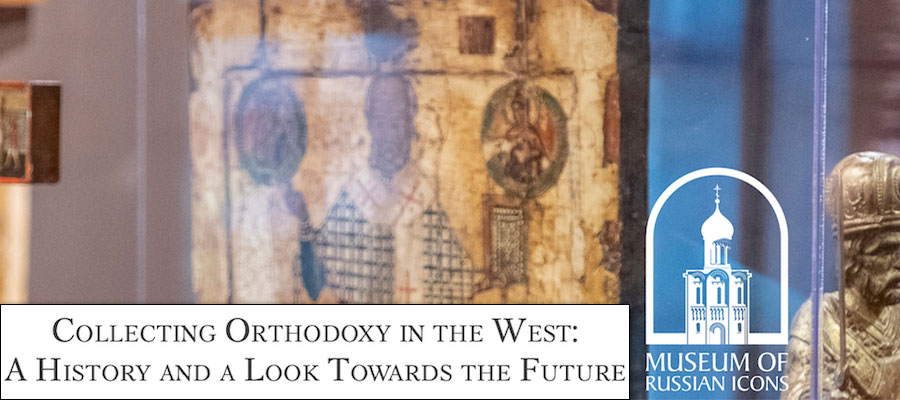Collecting Orthodoxy in the West: A History and A Look Towards the Future, 2021 Digital Conference, Museum of Russian Icons, June 11–12, 2020
In a 1947 article titled “Byzantine Art and Scholarship in America,” Kurt Weitzmann examined the history of collecting Byzantine art in the United States. “...The combination of formal beauty and material splendor, coupled with great technical perfection and an aristocratic spirit which gives to even the smallest object a rare distinction...” renders these works particularly attractive to private collectors, wrote Weitzmann. Our conference takes this statement as a starting point and focuses on the history of collecting Christian Orthodox objects in the West from the nineteenth century to the present: a topic replete with spectacular objects, profound questions and captivating narratives.
This international conference, organized and sponsored by the Museum of Russian Icons in Clinton, MA (USA), considers why, how, where, and by whom these objects have been and continue to be acquired. Once obtained, how are they classified, conserved, displayed, and described? How and by whom is their value, whether symbolic or monetary, determined? What is the relationship between their original purpose and the newfound one? From Marjorie Merriweather Post and Henry Walters to modern day collectors such as Gordon Lankton, small private museums to major public institutions, there has been a sustained interest in owning architectural remnants, manuscripts, liturgical objects, enkolpia and, of course, icons. Whether to save them from destruction, perpetuate a living tradition, preserve personal or communal memory, demonstrate erudition, wealth or taste, or to tell a story, these pieces are found in nearly every important collection. In addition to the above, topics include, but are not limited to: discussions of single objects or entire collections; individual or institutional collectors; related questions of loot, provenance, authenticity, religious and cultural sensitivity, and ethics; as well as past collecting patterns versus possible future directions.
We welcome papers from museum professionals and scholars at any career stage.
